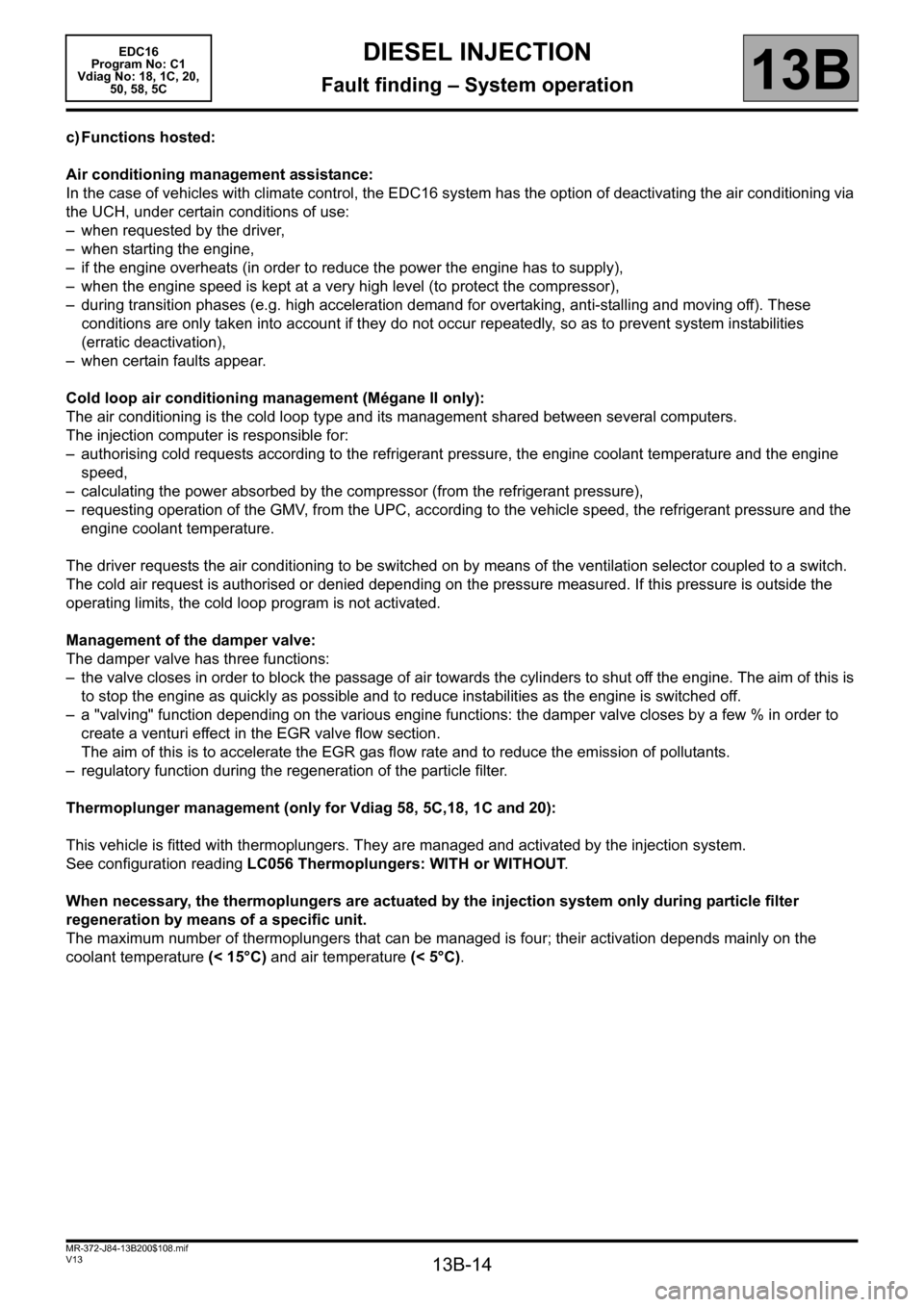tow RENAULT SCENIC 2011 J95 / 3.G Engine And Peripherals EDC16 Workshop Manual
[x] Cancel search | Manufacturer: RENAULT, Model Year: 2011, Model line: SCENIC, Model: RENAULT SCENIC 2011 J95 / 3.GPages: 365, PDF Size: 2.11 MB
Page 14 of 365

13B-14
MR-372-J84-13B200$108.mif
V13
DIESEL INJECTION
Fault finding – System operation
EDC16
Program No: C1
Vdiag No: 18, 1C, 20,
50, 58, 5C
13B
c) Functions hosted:
Air conditioning management assistance:
In the case of vehicles with climate control, the EDC16 system has the option of deactivating the air conditioning via
the UCH, under certain conditions of use:
– when requested by the driver,
– when starting the engine,
– if the engine overheats (in order to reduce the power the engine has to supply),
– when the engine speed is kept at a very high level (to protect the compressor),
– during transition phases (e.g. high acceleration demand for overtaking, anti-stalling and moving off). These
conditions are only taken into account if they do not occur repeatedly, so as to prevent system instabilities
(erratic deactivation),
– when certain faults appear.
Cold loop air conditioning management (Mégane II only):
The air conditioning is the cold loop type and its management shared between several computers.
The injection computer is responsible for:
– authorising cold requests according to the refrigerant pressure, the engine coolant temperature and the engine
speed,
– calculating the power absorbed by the compressor (from the refrigerant pressure),
– requesting operation of the GMV, from the UPC, according to the vehicle speed, the refrigerant pressure and the
engine coolant temperature.
The driver requests the air conditioning to be switched on by means of the ventilation selector coupled to a switch.
The cold air request is authorised or denied depending on the pressure measured. If this pressure is outside the
operating limits, the cold loop program is not activated.
Management of the damper valve:
The damper valve has three functions:
– the valve closes in order to block the passage of air towards the cylinders to shut off the engine. The aim of this is
to stop the engine as quickly as possible and to reduce instabilities as the engine is switched off.
– a "valving" function depending on the various engine functions: the damper valve closes by a few % in order to
create a venturi effect in the EGR valve flow section.
The aim of this is to accelerate the EGR gas flow rate and to reduce the emission of pollutants.
– regulatory function during the regeneration of the particle filter.
Thermoplunger management (only for Vdiag 58, 5C,18, 1C and 20):
This vehicle is fitted with thermoplungers. They are managed and activated by the injection system.
See configuration reading LC056 Thermoplungers: WITH or WITHOUT.
When necessary, the thermoplungers are actuated by the injection system only during particle filter
regeneration by means of a specific unit.
The maximum number of thermoplungers that can be managed is four; their activation depends mainly on the
coolant temperature (< 15°C) and air temperature (< 5°C).